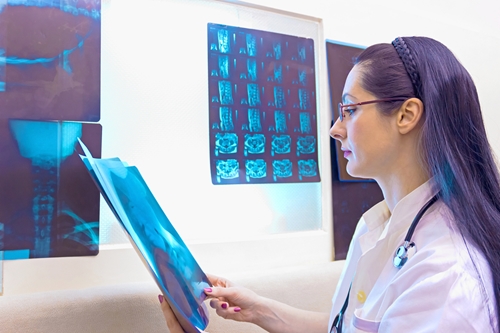Diagnostic radiology offers countless benefits to both patients and health care providers. The practice gives doctors insight into people's conditions and may bring to light a problem that could not be seen with a regular exam. However, too much of a good thing can also have negative consequences. The risks radiation poses and the costs increase as the number of tests grows. A presentation at the Association for Medical Imaging Management's annual conference offered clinical decision support software as a possible solution to the over-imaging problem.
Overuse of imaging harmful to healthcare
Just 10 years ago, nearly 400 million medical imaging procedures were performed in the U.S., according to the American Academy of Family Physicians. The nation's 18 million nuclear imaging tests made up 50 percent of worldwide use, despite the U.S. only contributing to 4.6 percent of the global population. The country has an imaging problem. American medical professionals use diagnostic imaging more than they should, which can lead to problems for both health care organizations and patients.
From 2000 to 2006, Medicare's imaging costs rose from $6.9 billion to $14.1 billion, Liz Quam, AHRA presenter and executive director of the Center for Diagnostic Imaging's Quality Institute reported. U.S. President Barack Obama has been attempting to curb spending since he took office in 2008, but cuts have not been the answer. Clinical decision support software, on the other hand, might be.
New provisions may help with appropriate use
The Protecting Access to Medicare Act of 2014 called for appropriate use criteria to be established for diagnostic imaging to eliminate the over-ordering of these tests. These incentives include a reduction in reimbursements for physicians who do not comply with the guidelines. Starting in 2020, they will also be required to apply for authorization to perform tests. While the program is expected to cost $50 million to implement, it will save approximately $200 million in the following decade.
The PAM Act supports the use of CDS, which can help guide decisions regarding patients' care. The program works alongside EHR software to ensure people receive the best treatment possible. CDS reduces medical errors and adverse events, improves cost-efficiency and increases compliance with the Centers for Medicare and Medicaid Services' Meaningful Use, the Healthcare Information and Management Systems Society explained. CDS software may even detect patterns to help doctors determine treatment.
CDS has various other benefits, Quam claimed. It may improve the relationship between radiologists and primary care physicians, avoid inappropriate use of imaging and helps make decisions using real-time information. From 2007 to 2009, an organization in Minnesota saved $168.5 million by implementing the software.
Using CDS helps meet Stage 2 of MU requirements. Eligible providers must employ five CDS methods related to four or more clinical quality measures, according to the CMS. The implementation of the software will help improve the quality of care and patient safety.
Health care providers in the U.S. significantly overuse diagnostic imaging, but the PAM Act and CDS software may be able to rein in the problem.
Contact Viztek for more information.
Ronny Bachrach
Latest posts by Ronny Bachrach (see all)
- Konica Minolta Debuts First-of-Its-Kind Digital U-Arm System at AHRA - July 27, 2016
- Researchers Detect Signs Of Stroke Risk Using MRI - June 27, 2016
- Imaging Biz: Q&A with David S. Channin MD: How to Make PACS Patient Centered - June 22, 2016










